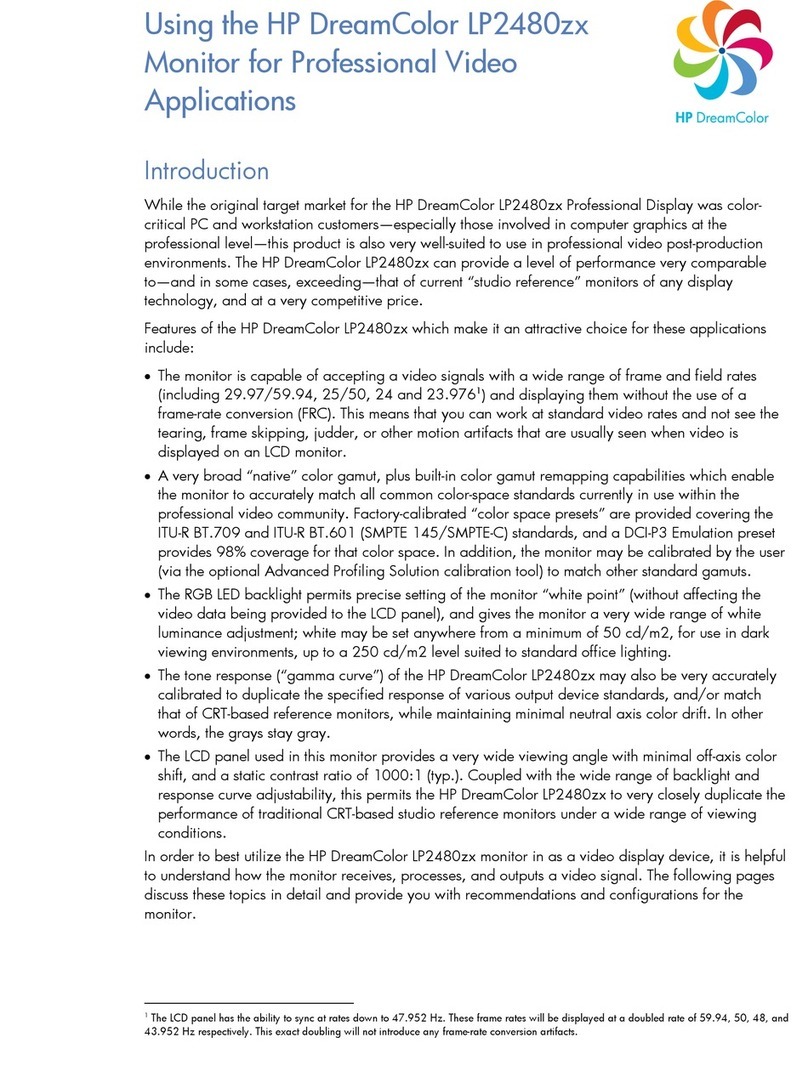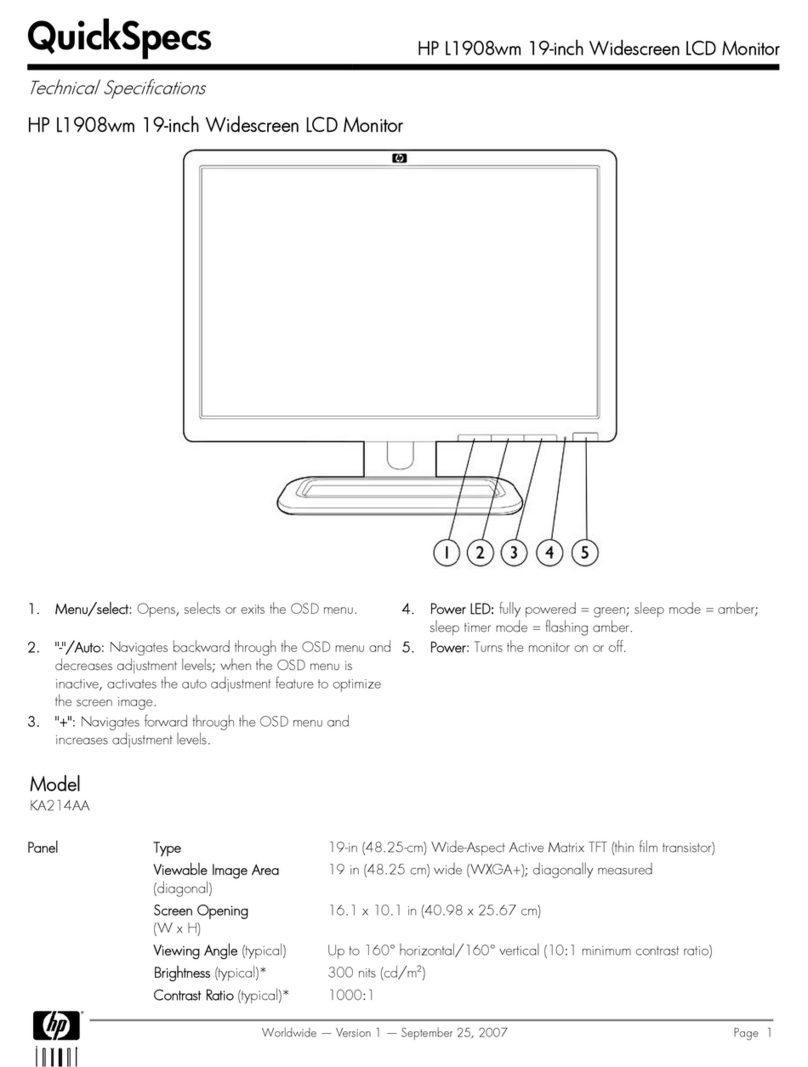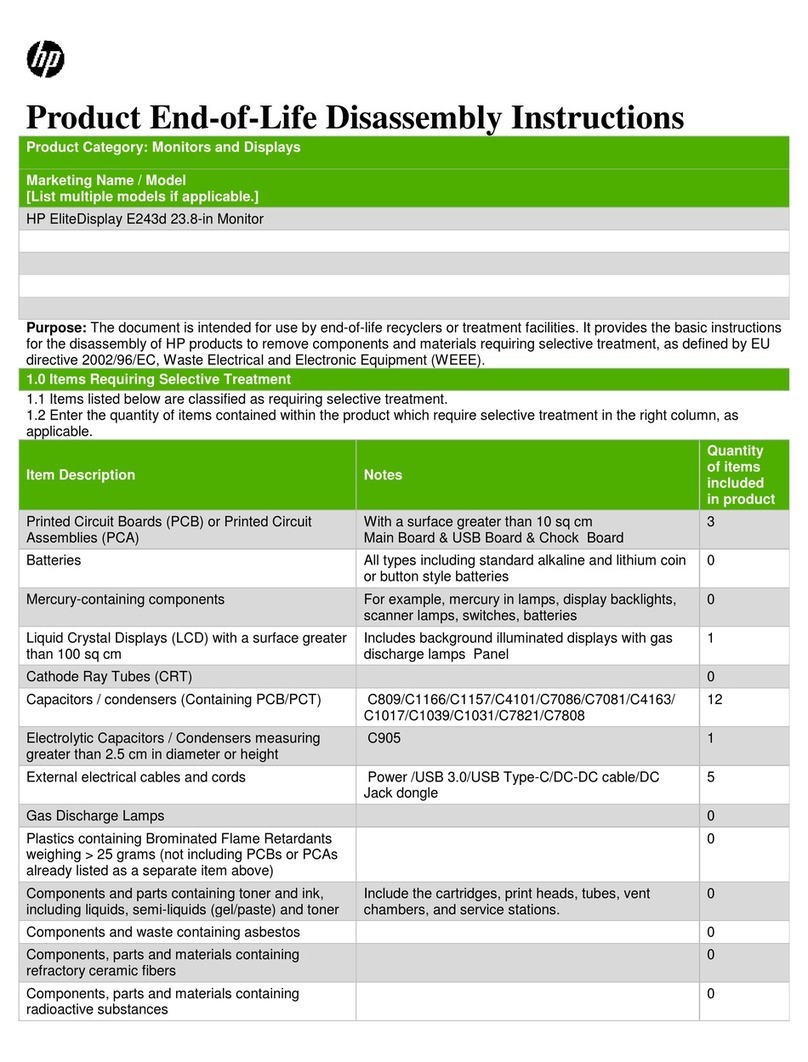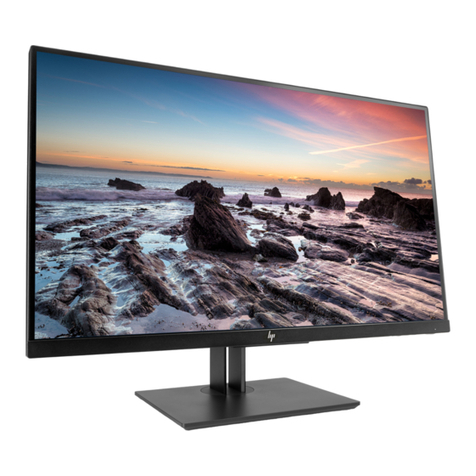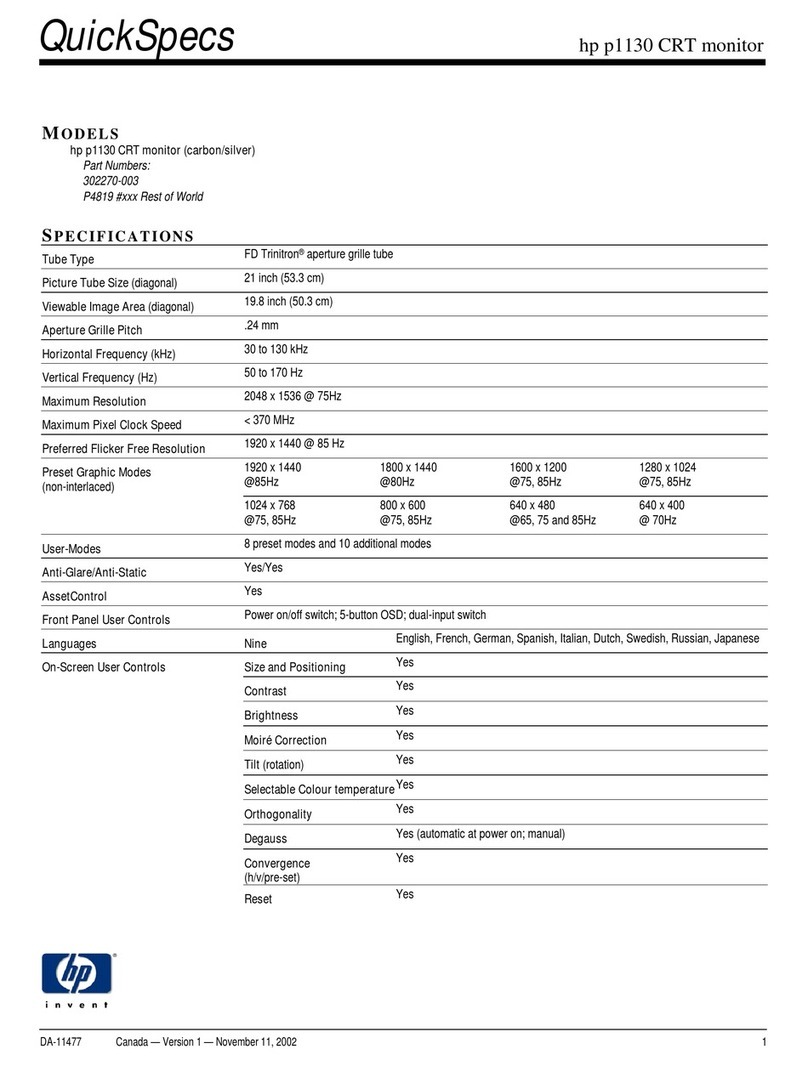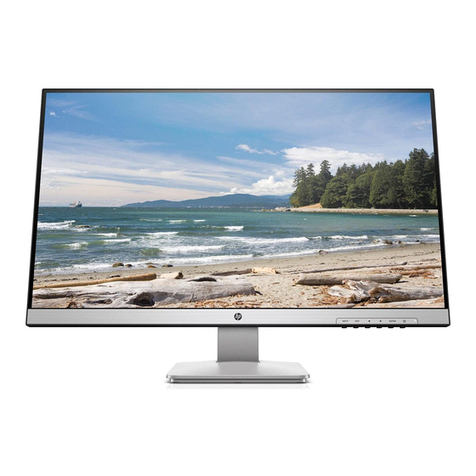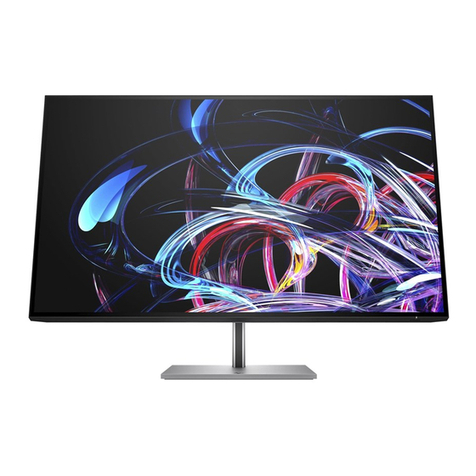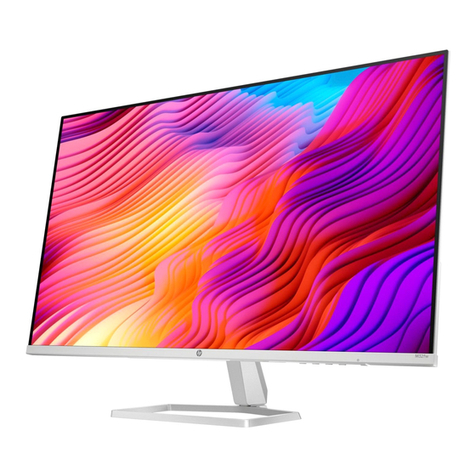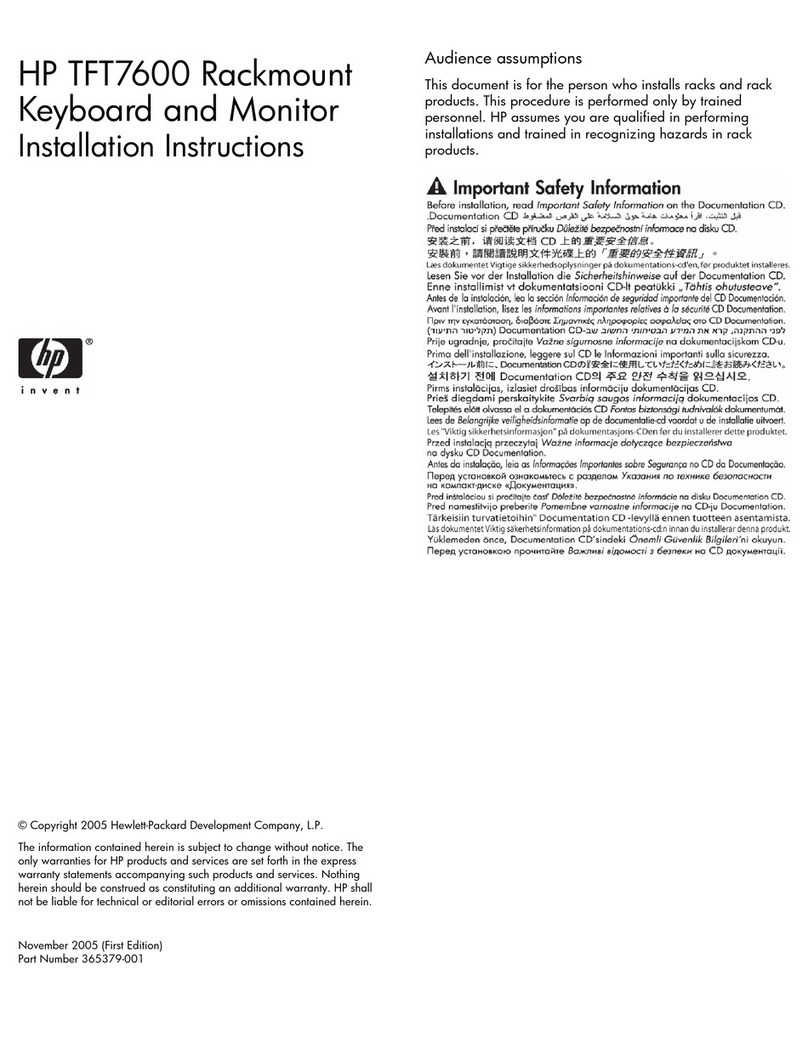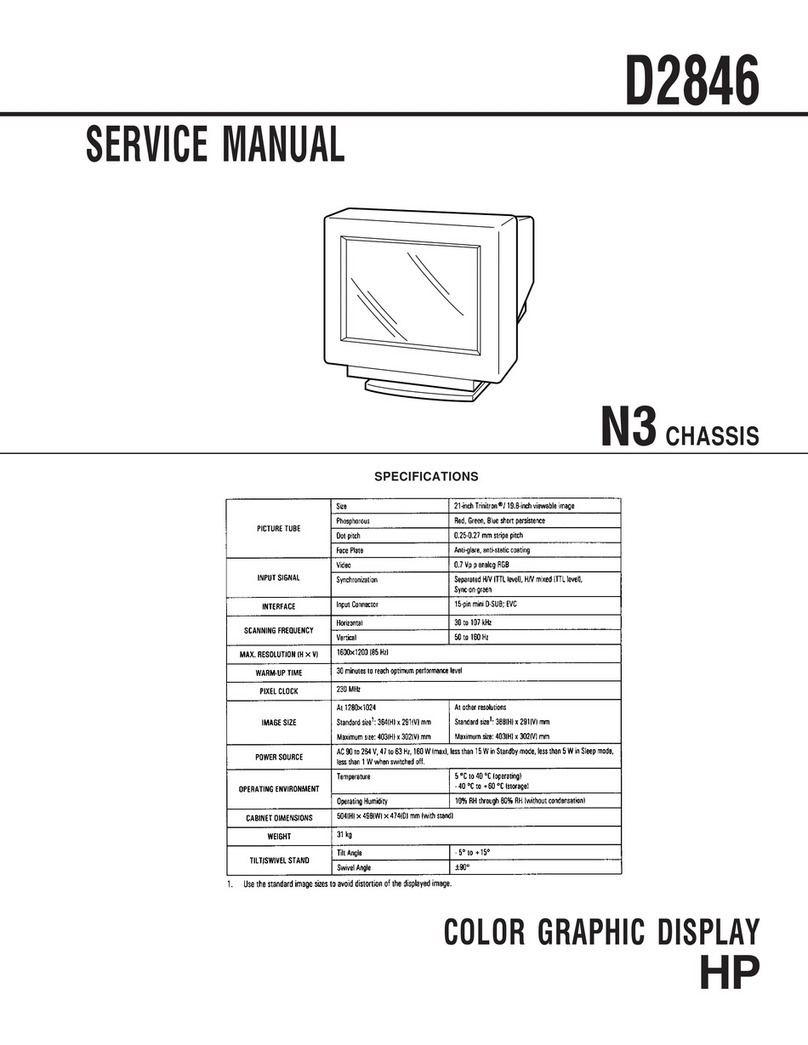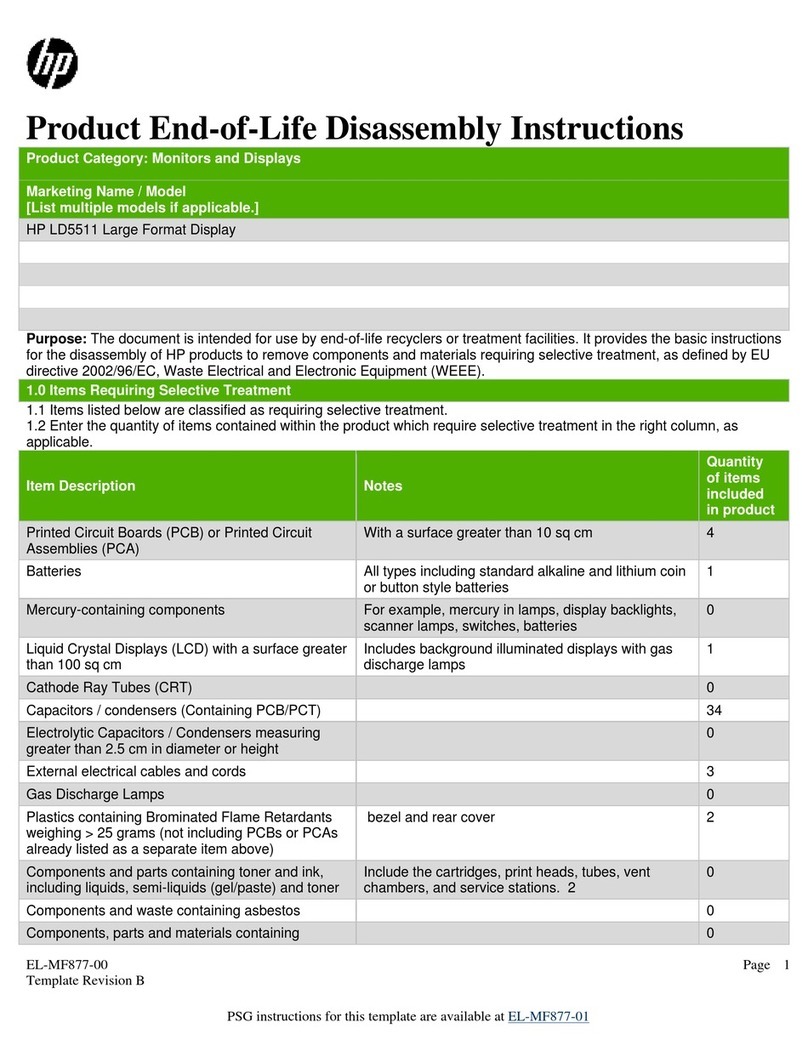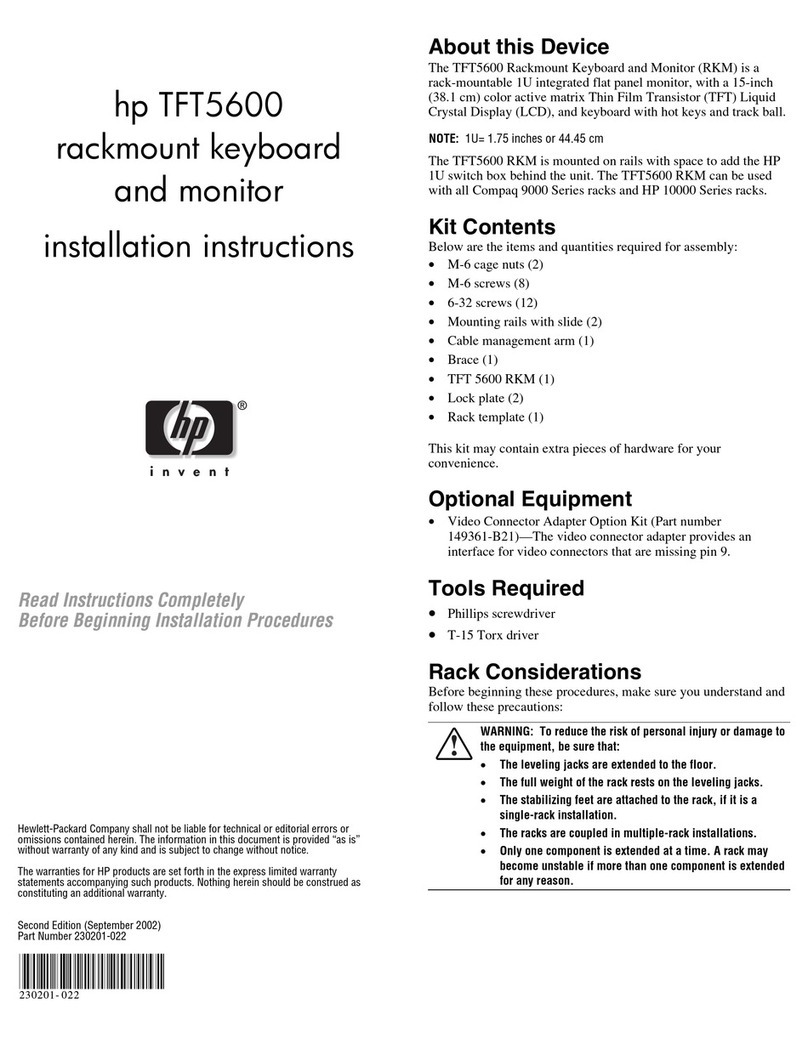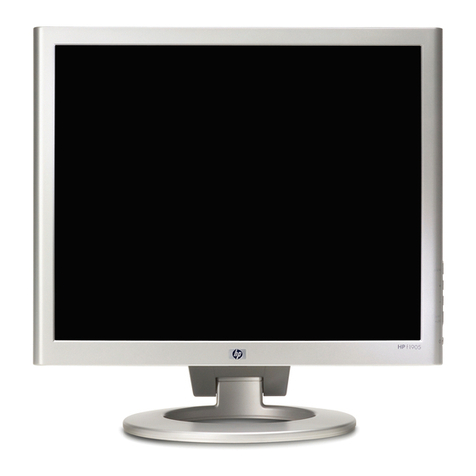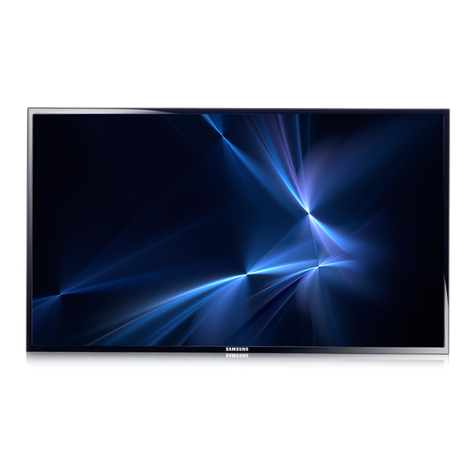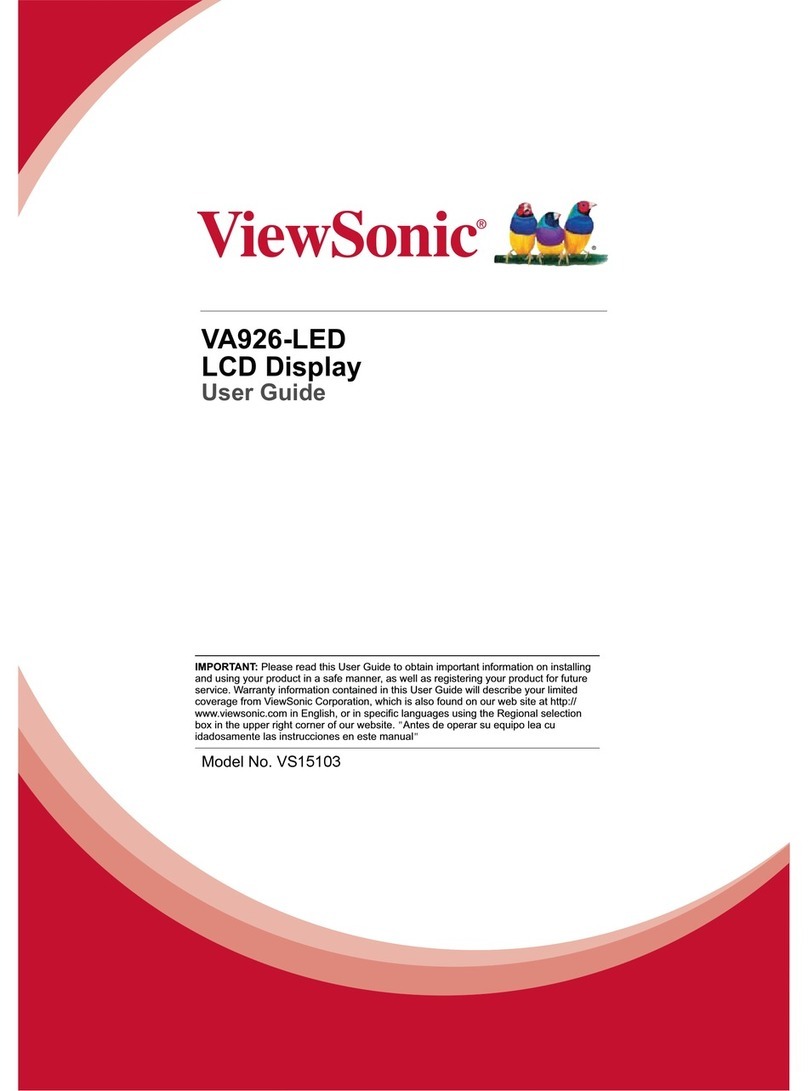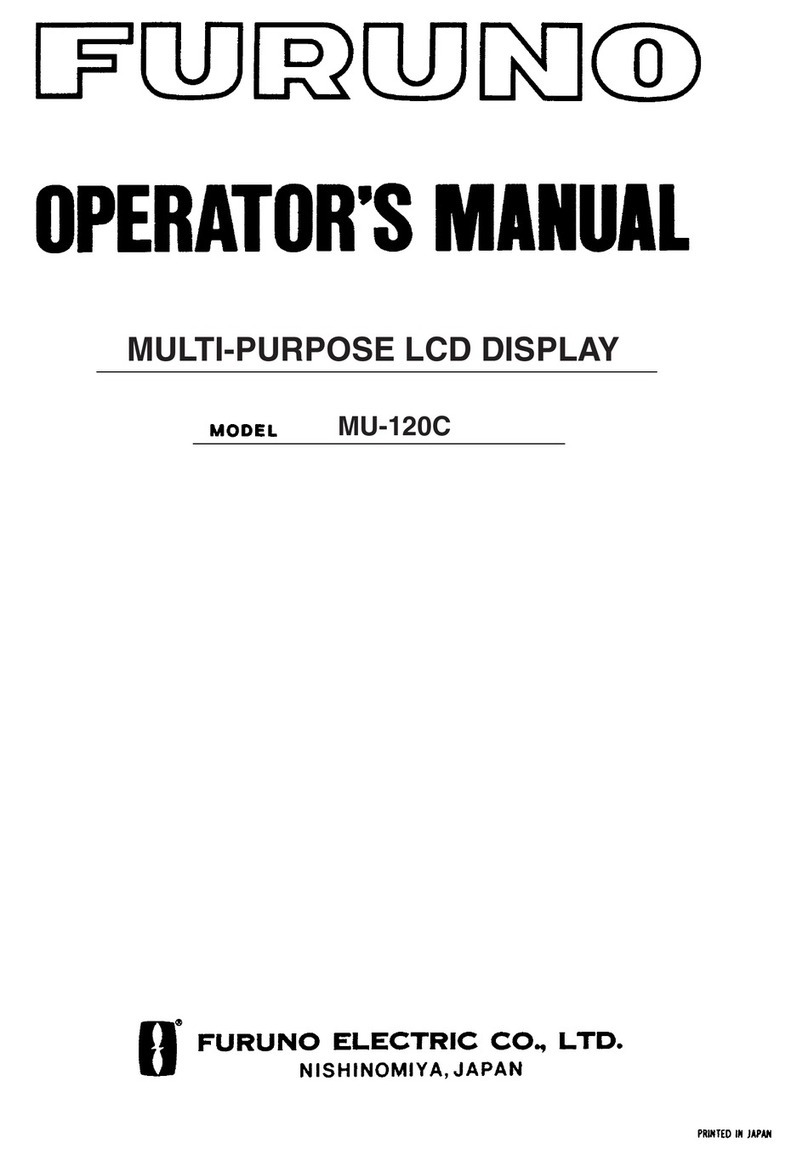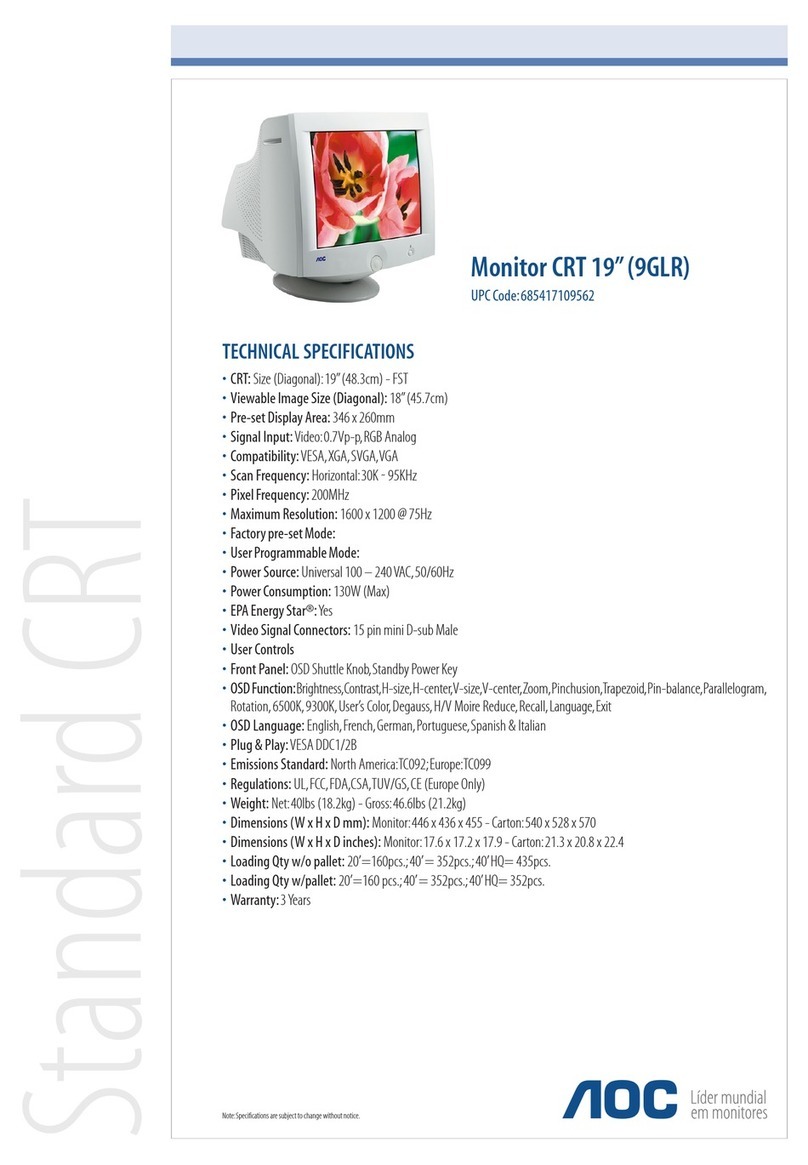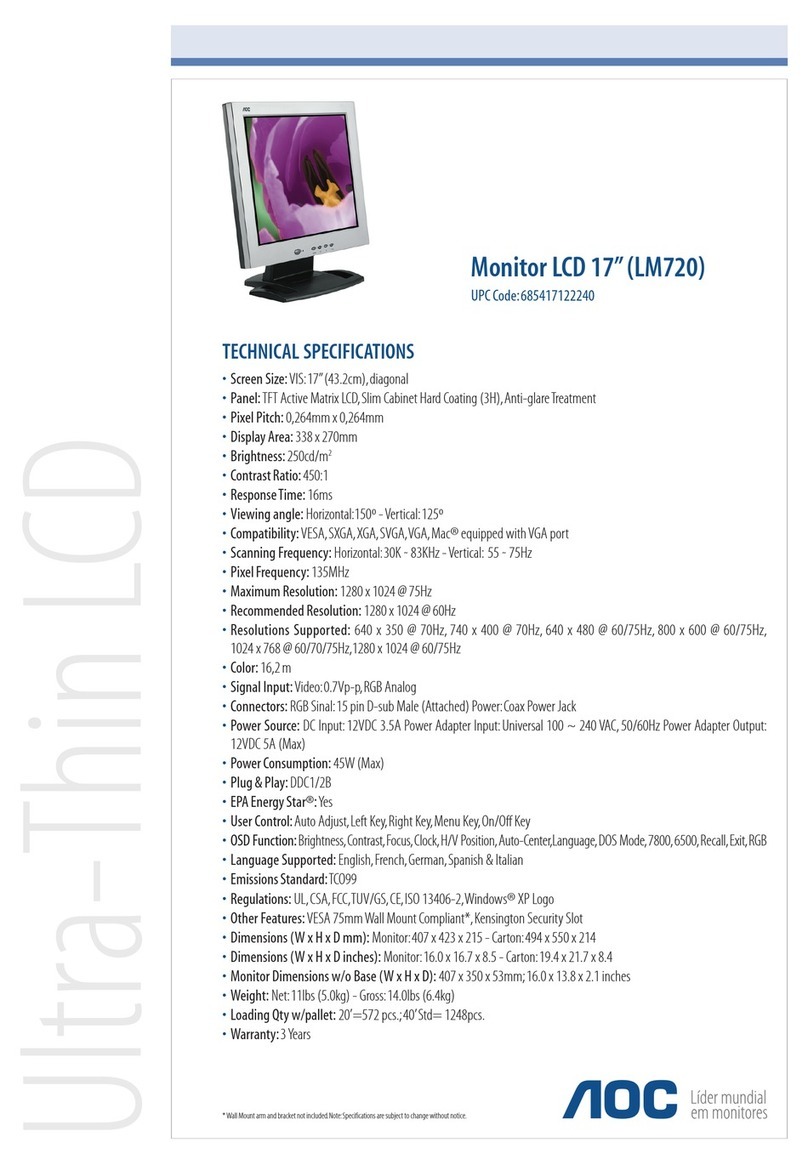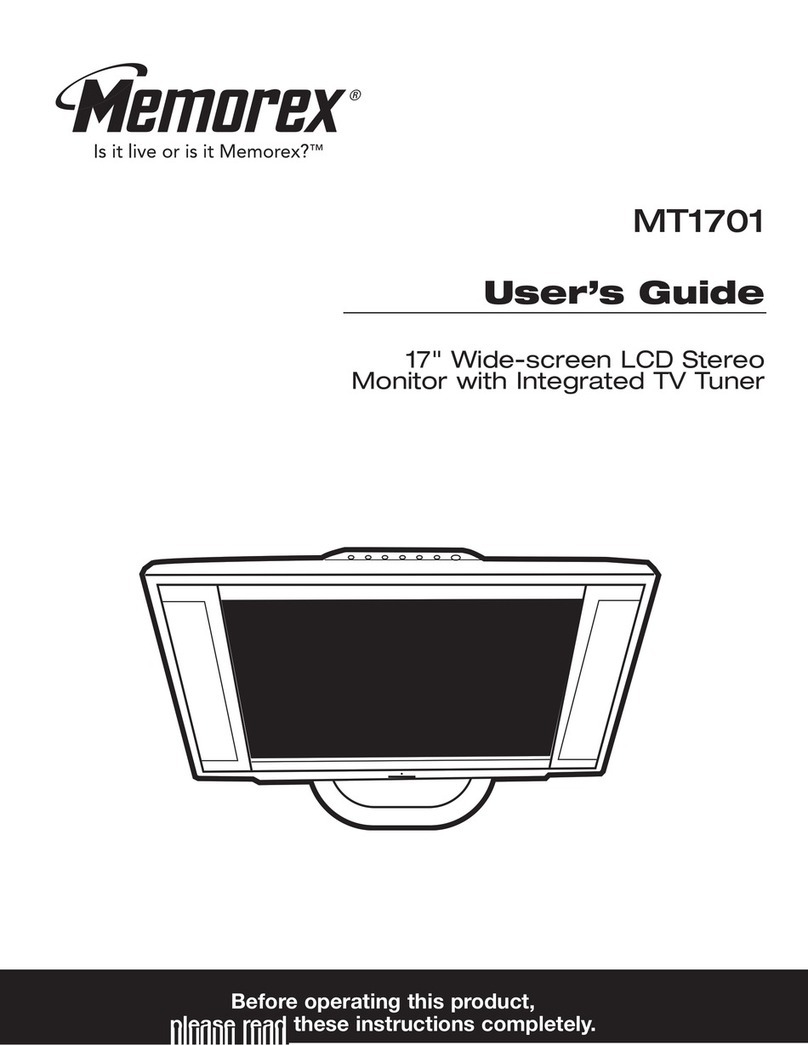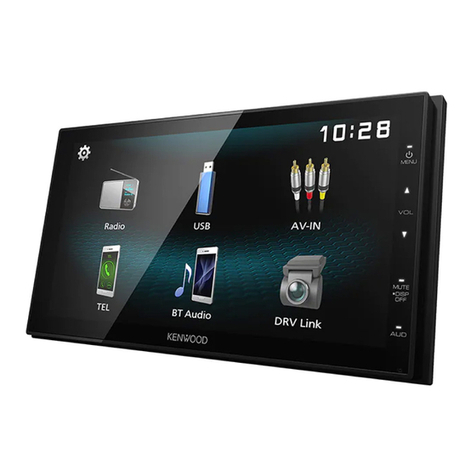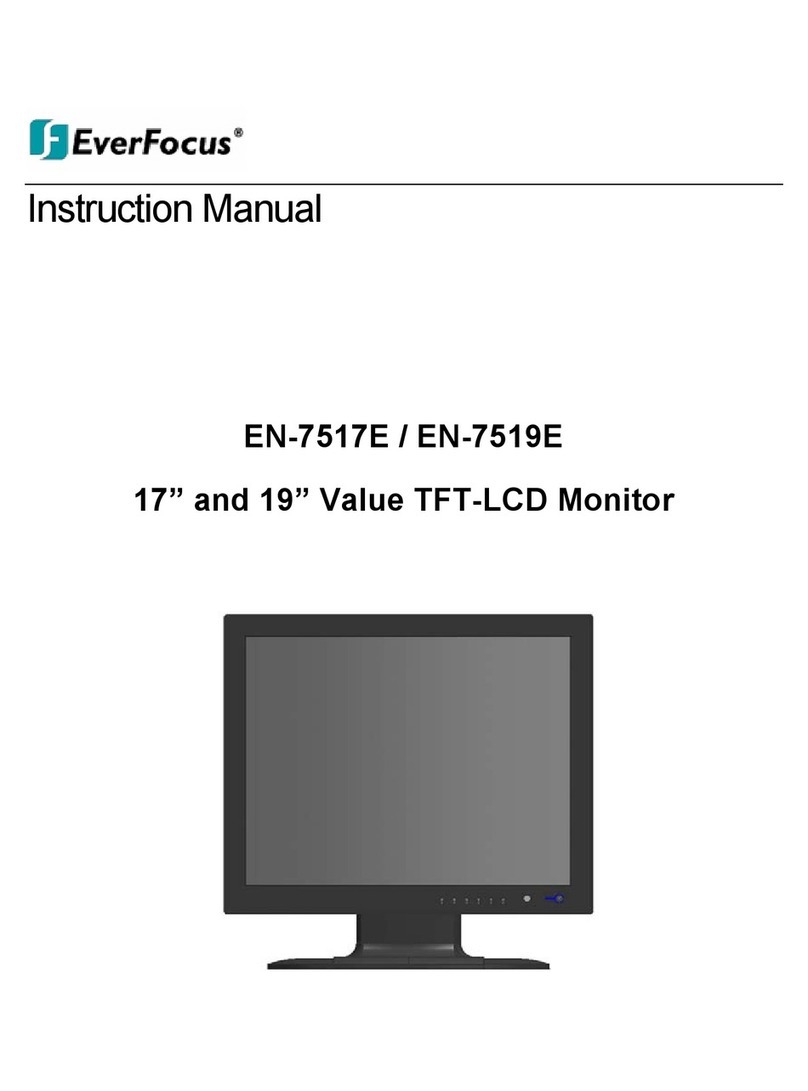
Introduction
Over the past few years, the computer industry has experienced a rapid shift from the traditional CRT
monitor to those based on liquid-crystal display (LCD) technology. As of late 2004, the LCD
accounted for over half the PC monitors shipped worldwide, the latest milestone in a trend which is
expected to continue through the decade. This will soon result in the CRT being relegated to use only
in low-end applications and emerging markets, where cost is the primary concern. The effects of this
trend on the display industry have also been readily apparent, as many long-time CRT makers have
ceased production of this type of display and turned their full attention to the LCD. This has been of
particular concern in the high-end computer graphics market, where a relatively small number of
manufacturers have supplied the large-size (20-22" diagonal) CRT monitors used in CAD, CAE,
computer animation, and other professional graphics-intensive fields.
In the past, this market has been dominated by "aperture-grille" CRT types, some of which are now
reaching the end of their production life, at least in this segment of the market. This situation is raising
concerns in many customers' minds regarding their future display needs. Will there be suitable
alternatives to these familiar CRT monitors? Can LCDs meet the demanding needs of this industry?
Fortunately, LCD technology has been developing at the same rapid pace that LCD monitors
themselves have been gaining market share. Driven by the demands of both the computer monitor
and television markets, today's LCD monitors provide greatly improved color, brightness, contrast,
viewing angles, and response time, and at a lower cost than their predecessors of just three or four
years ago. The current state of the art in LCD products can equal or better CRT performance in
virtually every area, while still providing the LCD's traditional advantages of reduced size, weight,
and energy consumption. In addition, LCDs have always lacked many of the deficiencies which
traditionally plagued CRT monitors—such as uneven focus, imperfect linearity, and color
misconvergence and purity problems. This paper provides an in-depth look at many of these issues,
including some advantages of the LCD which may not often be considered in the average display
purchase decision.
Image quality
As noted above, the LCD cannot suffer from many of the image problems which have always affected
CRT displays (and which could never be completely addressed in that technology). The LCD, like most
other "flat-panel" display types, is a fixed-pixel technology. When operated in its native mode (as is
generally recommended), the LCD display provides a one-to-one correspondence between the
"logical" pixels which create the image in the computer and the physical pixels on the display screen.
Each pixel is in precisely the proper relationship to the others, completely eliminating any concerns
over linearity, geometric distortion, focus, or other alignment or distortion problems. Objects within
the image are assured of being displayed at the correct size and shape no matter where they appear
on the screen. This is especially important in critical applications such as those being considered here,
and even more so with large-screen (20" and above) monitors—where relatively minor distortions are
that much larger, and where the CRT has always been particularly vulnerable; larger CRTs are in
general more difficult to properly correct than their smaller kin.
In addition to these benefits, the LCD's completely different method of producing its image gives it
significant advantages over the CRT in the areas of color and brightness uniformity and overall
brightness. LCDs essentially operate as "light valves," acting to let a measured amount of light through
colored filters at each pixel location. The light is produced by a "backlight," which is simply a source
of bright white light located behind the LCD panel itself (as seen by the viewer). This arrangement can
produce significantly higher light output, with better uniformity, than was ever possible with high-
resolution CRT displays. The light output of the LCD is also far more constant than that of a CRT,
essentially eliminating any concern with display "flicker" even at high brightness levels and relatively
low refresh rates. An LCD monitor will be flicker-free even at video-friendly frame rates of 50-60 Hz,
